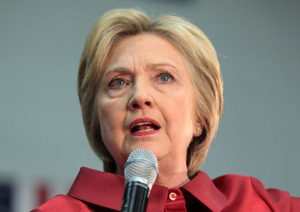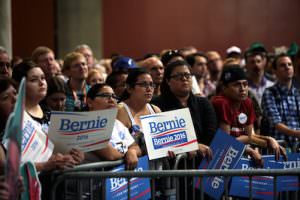America’s Addiction to Violence
Mass shootings have become routine in the United States and speak to a society that both lives by violence and uses it as a tool to feed the coffers of the merchants of death. Surian Soosay / CC BY 2.0
1
2
3
4
Surian Soosay / CC BY 2.0
1
2
3
4
Violence feeds on corporate controlled disimagination machines that celebrate it as a sport while upping the pleasure quotient for the public. Americans do not merely engage in violence, they are also entertained by it. This kind of toxic irrationality and lure of violence is mimicked in America’s aggressive foreign policy, in the sanctioning of state torture, and in the gruesome killings of civilians by drones. As my colleague David L. Clark pointed out to me in a private email correspondence, “bombing make-believe countries is not a symptom of muddled confusion but, quite to the contrary, a sign of unerring precision. It describes the desire to militarize nothing less than the imagination and to target the minutiae of our dreams.” War-like values no longer suggest a flirtation with a kind of mad irrationality or danger. On the contrary, they have become normalized. For instance, the United States government is willing to lock down a major city such as Boston in order to catch a terrorist or prevent a terrorist attack, but refuses to pass gun control bills that would significantly lower the number of Americans who die each year as a result of gun violence. As Michael Cohen observes, it is truly a symptom of irrationality when politicians can lose their heads over the threat of terrorism, even sacrificing civil liberties, but ignore the fact that “30,000 Americans die in gun violence every year (compared to the 17 who died [in 2012) in terrorist attacks.” It gets worse. As the threat of terrorism is used by the American government to construct a surveillance state, suspend civil liberties, and accelerate the forces of authoritarianism, the fear of personal and collective violence has no rational bearing on addressing the morbid acceleration of gun and other forms of unnecessary violence in the United States. In fact, the fear of terrorism appears to feed, recuperate, and expand a toxic culture of violence produced, in part, by the wide and unchecked availability of guns. America’s fascination with guns and violence functions as a form of sport and entertainment, while offering the false promise of security, which even trumps a more general fear of violence on the part of terrorists. In this logic one not only kills terrorists with drones, but also makes sure that patriotic Americans are individually armed so they can use force to protect themselves against the dangers whipped up in a culture of fear and hysteria promoted by right-wing politicians, pundits, and the corporate controlled media.
Rather than bring violence into a political debate that would limit its production, various states increase its possibilities by taking a plunge into insanity with the passing of laws that allow “guns at places from bars to houses of worship.” Florida’s “Stand Your Ground” law, based on the notion that one should shoot first and ask questions later is a morbid reflection of America’s national psychosis regarding the adulation of gun culture and the paranoiac fears that fuel it. This fascination with guns and violence has produced a pathology that reaches the highest levels of government and serves to further anti-democratic and authoritarian forces. The U. S. government’s warfare state is propelled by a military-industrial complex that cannot spend enough on weapons of death and destruction. Super modern planes such as the F-35 Joint Strike Fighter cost up to $228 million each and are plagued by mechanical problems and yet are supported by a military and defense establishment. As Gabriel Kolko observes such war-like investments “reflect a pathology and culture that is expressed in spending more money regardless” of how it contributes to running up the debt or for that matter thrives on “the energies of the dead.” Militarism provides ideological support for policies that protect gun owners and sellers rather than children. The Children’s Defense Fund is right in stating “Where is our anti-war movement here at home? Why does a nation with the largest military budget in the world refuse to protect its children from relentless gun violence and terrorism at home? No external enemy ever killed thousands of children in their neighborhoods, streets and schools year in and year out.”
There is a not so hidden structure of politics at work in this type of sanctioned irrationality. Advocating for gun rights provides a convenient discourse for ignoring a “harsh neoliberal corporate-state order that routinely generates pervasive material suffering, social dislocation, and psychological despair—worsening conditions that ensure violence in its many expressions.” It says nothing about the corrupt bankers and hedge fund managers who invest in the industries of death and trade in profits at the expense of human life, all the while contributing to the United States being the largest arms exporter in the world. More specifically, the call for gun rights also conveniently side steps and ignores criticizing a popular culture and corporate controlled media which uses violence to attract viewers, increase television ratings, produce Hollywood blockbusters, and sell video games that celebrate first person shooters.
While it would be wrong to suggest that the violence that saturates popular culture directly causes violence in the larger society, it is arguable that such violence serves not only to produce an insensitivity to real life violence but also functions to normalize violence as both a source of pleasure and as a practice for addressing social issues. When young people and others begin to believe that a world of extreme violence, vengeance, lawlessness, and revenge is the only world they inhabit, the culture and practice of real-life violence is more difficult to scrutinize, resist, and transform. Many critics have argued that a popular culture that endlessly trades in violence runs the risk of blurring the lines between the world of fantasies and the world we live in. What they often miss is that when violence is celebrated in its myriad registers and platforms in a society, even though it lacks any sense of rationality, a formative culture is put in place that is amenable to the pathology of totalitarianism. That is, a culture that thrives on violence runs the risk of losing its capacity to separate politics from violence: A. O. Scott recognizes such a connection between gun violence and popular culture, but he fails to register the deeper significance of the relationship. He writes:
Your support matters……it is absurd to pretend that gun culture is unrelated to popular culture, or that make-believe violence has nothing to do with its real-world correlative. Guns have symbolic as well as actual power, and the practical business of hunting, law enforcement and self-defense has less purchase in our civic life than fantasies of righteous vengeance or brave resistance….[Violent] fantasies have proliferated and intensified even as our daily existence has become more regulated and standardized — and also less dangerous. Perhaps they offer an escape from the boredom and regimentation of work and consumption.
Independent journalism is under threat and overshadowed by heavily funded mainstream media.
You can help level the playing field. Become a member.
Your tax-deductible contribution keeps us digging beneath the headlines to give you thought-provoking, investigative reporting and analysis that unearths what's really happening- without compromise.
Give today to support our courageous, independent journalists.






You need to be a supporter to comment.
There are currently no responses to this article.
Be the first to respond.